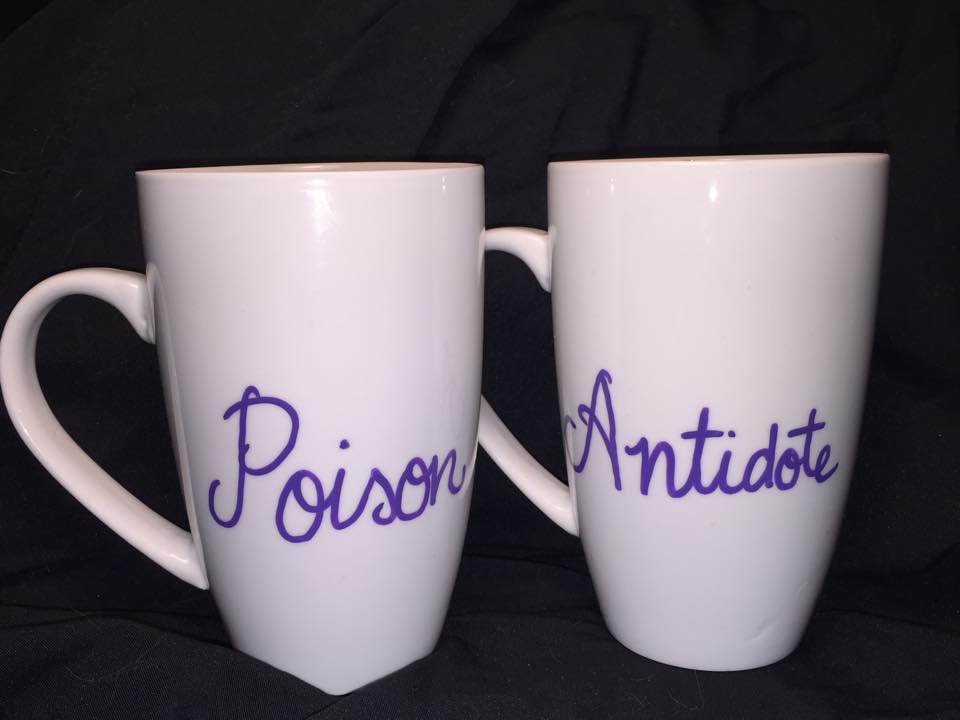

- Poison antidote kit full#
- Poison antidote kit professional#
Rhabdo, bright red venules seen on fundoscopy.Bradypnea and pulmonary edema (non-cardiogenic), apnea.Bradycardia, hypotension, arrhythmias, asystole.
 Tachycardia, palpitations and hypotension. CNS stimulation ( Headache, anxiety, confusion). Inhalation exposure may cause syncope and death after only a few breaths. Inhaled toxins more rapid than ingested. Affected by dose, route, formulation and exposure pattern.
Tachycardia, palpitations and hypotension. CNS stimulation ( Headache, anxiety, confusion). Inhalation exposure may cause syncope and death after only a few breaths. Inhaled toxins more rapid than ingested. Affected by dose, route, formulation and exposure pattern. Poison antidote kit full#
They found 50% ROSC in fire victims in full arrest when hydroxycobalamin was administered. Full arrest without full body burns incompatible with life.Paris Fire Brigade protocol recommend hydroxocobalamin administration patients who have had known smoke inhalation in an enclosed space with any of the following: Causes switch from aerobic to anaerobic metabolism despite adequate O2.Binds to cytochrome oxidase in mitochondria leads to cessation of electron transport.Pits of peaches, pears, apricots, crab apples.Gaseous chemical weapon known as prussic acid, hydrogen cyanide, or hydrocyanic acid.Burning of nitrogen-containing polymers (plastics, wool, silk).5.2 Cyanide Antidote Package (Lilly kit).if emesis (inducing vomiting) is warranted or medically indicated.if the product ingested was poisonous to begin with,.When it comes to our pets and poisons, we don’t want to chance endangering our pet’s lives with some made up, Internet-discovered, erroneous home remedies! We hear it all – owners who use milk, peanut butter, vegetable oil, or salt…and these remedies are all WRONG! Please know that these products should NEVER be administered as they don’t work! Consult your veterinarian or Pet Poison Helpline® to find out:
Poison antidote kit professional#
Never initiate first aid or administer any over-the-counter human medications to animals without speaking to a toxicologist or veterinary professional first! If you have any questions regarding the veterinary toxicology first aid kit recommendations, please call Pet Poison Helpline®.Īnother important thing to keep in mind is home remedies. Never administer hydrogen peroxide to any pet without checking with a veterinary professional first, as sometimes it’s not appropriate to induce vomiting at home.
Vegetable oil to assist in removal of sticky substancesīefore you attempt anything with your new first aid kit, always make sure to speak with a poison control specialist prior to initiating any therapies at home. Triple antibiotic ointment (with NO other combination ingredients – NOT for use in CATS!). Tablespoon/teaspoon set (to calculate the appropriate amount of hydrogen peroxide to give). Rubber gloves and/or Latex-free exam gloves. Oral dosing syringe, bulb syringe or turkey baster (for administering hydrogen peroxide or medication). Nail clippers and styptic powder or pencil. Liquid hand dish washing detergent (e.g., Dawn) without a bleach additive. Ice pack- instant, one time use, with small hand towel to wrap around pack. Always check to see if inducing emesis is indicated or safe for the possible ingestion or health status of the dog or species. Do not give to cats or brachycephalic dogs.  Hydrogen peroxide 3% (within the expiration date) for inducing vomiting in dogs. Supply of dry/canned pet food and treats. Food: Can of tuna packed in water or tasty canned pet food. Diphenhydramine (e.g., Benadryl®) 25 mg tablets or liquid 12.5 mg/tsp (5mL) concentration (with NO other combination ingredients). Corn syrup/table syrup (~1/8 cup in case of hypoglycemia). Bandage material: absorbent gauze pads, adhesive tape, gauze rolls, sterile non-stick gauze pads, splints and tongue depressors. Artificial tears, ophthalmic saline solution and sterile saline solution. Large towel/blanket- to assist in moving an injured, sick pet or to avoid possible bite from scared or injured pet. Assess the pet first before placing on a muzzle, to ensure the pet is not at risk for vomiting, choking, or respiratory distress. Nylon leash or used pair of nylons may replace a conventional muzzle. Kennel/pet carrier or nylon leash for safe transport and confinement of pet. List of temporary evacuation centers/shelters, which are pet friendlyīasic First-Aid Supplies: May be kept in a large tackle box for easy transport. List of dog/cat normal values (respiration rate, heart rate and rectal temperature). Updated vaccine records, especially proof of rabies vaccination. Microchip ID number and company phone #. The number for Pet Poison Helpline®: 1-85. The nearest emergency-veterinary clinic (along with directions!). Your neighborhood referring veterinarian clinic. Notebook or index card with phone numbers and addresses, stored in sealable sandwich bag to keep dry. Emergency Pet Supplies and Resources: In the event of an emergency
Hydrogen peroxide 3% (within the expiration date) for inducing vomiting in dogs. Supply of dry/canned pet food and treats. Food: Can of tuna packed in water or tasty canned pet food. Diphenhydramine (e.g., Benadryl®) 25 mg tablets or liquid 12.5 mg/tsp (5mL) concentration (with NO other combination ingredients). Corn syrup/table syrup (~1/8 cup in case of hypoglycemia). Bandage material: absorbent gauze pads, adhesive tape, gauze rolls, sterile non-stick gauze pads, splints and tongue depressors. Artificial tears, ophthalmic saline solution and sterile saline solution. Large towel/blanket- to assist in moving an injured, sick pet or to avoid possible bite from scared or injured pet. Assess the pet first before placing on a muzzle, to ensure the pet is not at risk for vomiting, choking, or respiratory distress. Nylon leash or used pair of nylons may replace a conventional muzzle. Kennel/pet carrier or nylon leash for safe transport and confinement of pet. List of temporary evacuation centers/shelters, which are pet friendlyīasic First-Aid Supplies: May be kept in a large tackle box for easy transport. List of dog/cat normal values (respiration rate, heart rate and rectal temperature). Updated vaccine records, especially proof of rabies vaccination. Microchip ID number and company phone #. The number for Pet Poison Helpline®: 1-85. The nearest emergency-veterinary clinic (along with directions!). Your neighborhood referring veterinarian clinic. Notebook or index card with phone numbers and addresses, stored in sealable sandwich bag to keep dry. Emergency Pet Supplies and Resources: In the event of an emergency







 0 kommentar(er)
0 kommentar(er)
